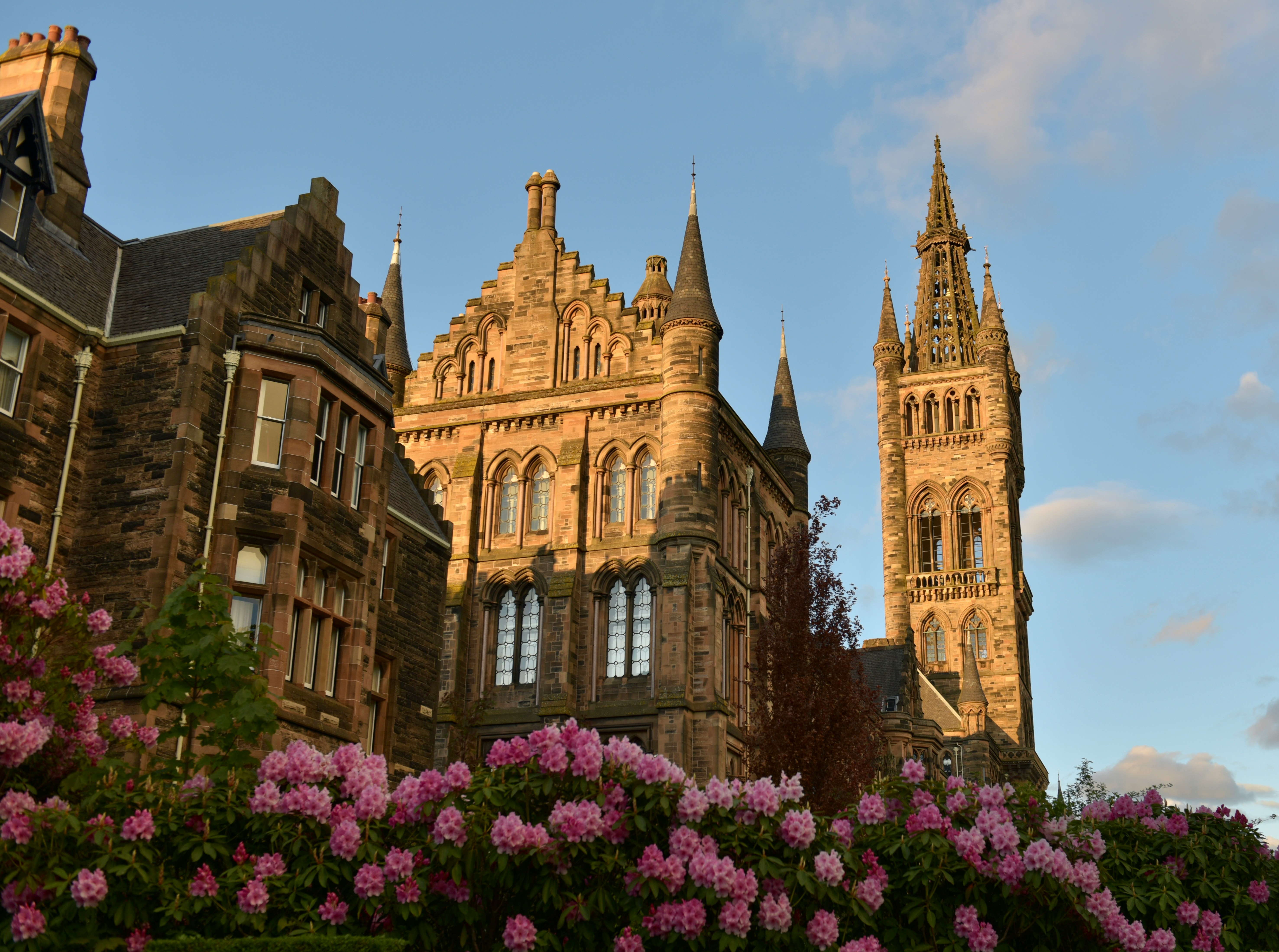Facts about France is an intriguing issue for residents and tourists at home and abroad. Welcome to a journey through one of the most captivating countries in the world—France! From its iconic Eiffel Tower to the charming vineyards of Bordeaux, France is a land steeped in history, culture, and natural beauty. Whether you dream of strolling through the streets of Paris, savoring gourmet cuisine, or immersing yourself in art and history, France has something for everyone. In this blog, we’ll explore fun facts about France that will deepen your appreciation for this incredible destination. Get ready to discover the interesting facts about France and the secrets behind its global influence!
- Official Name: French Republic
- Form of government: Republic
- Capital: Paris
- Population: 67, 092, 056
- Official languages: French
- Monetary Unit: Euro
- Area: 543,965 square kilometres
- Major Mountain Ranges: Alps, Pyrenees, Massif Central
- Major Rivers:Seine, Rhine and Rhône
- French Flag:
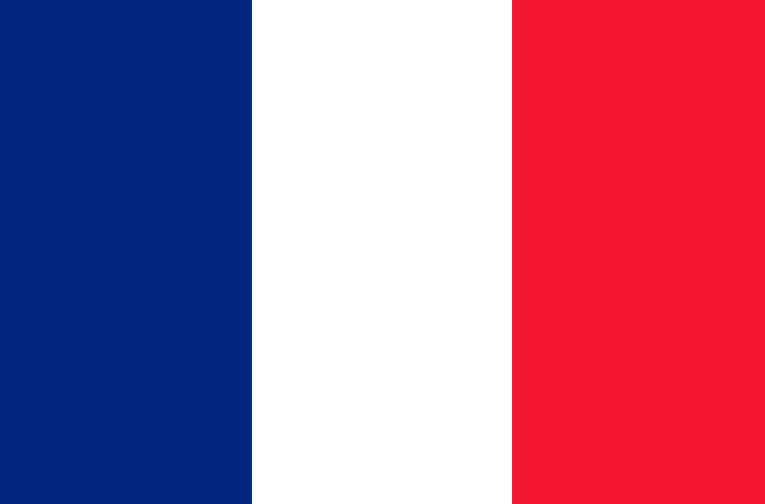
- Map of France:
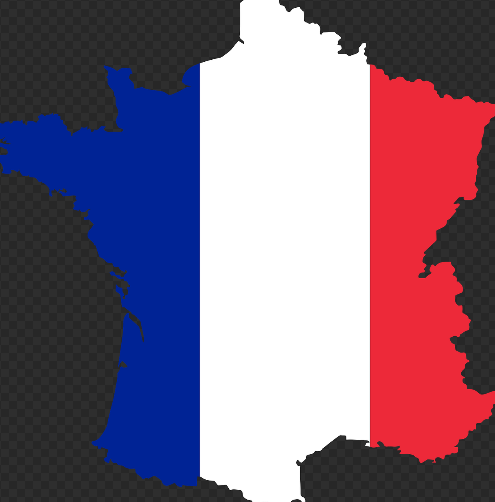
Facts about France: Geography and Landscape

The vast majority of France’s territory and population is situated in Western Europe and is called Metropolitan France. It is bordered by the North Sea in the north, the English Channel in the northwest, the Atlantic Ocean in the west and the Mediterranean Sea in the southeast. Its land borders consist of Belgium and Luxembourg in the northeast, Germany and Switzerland in the east, Italy and Monaco in the southeast, and Andorra and Spain in the south and southwest.
Metropolitan France is situated mostly between latitudes 41° and 51° N, and longitudes 6° W and 10° E, on the western edge of Europe, and thus lies within the northern temperate zone.
France is a semi-presidential republic and its capital, largest city and main cultural and economic centre is Paris.
Facts about France: Nature and Wildlife
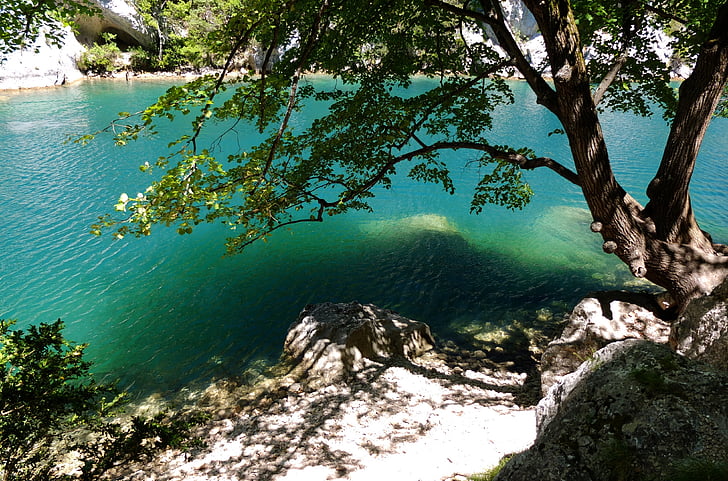
Metropolitan France has a wide variety of topographic sets and natural landscapes. During the Hercynian uplift in the Paleozoic Era, the Armorican Massif, the Massif Central, the Morvan, the Vosges and Ardennes ranges and the island of Corsica were formed.
The coastlines offer contrasting landscapes: mountain ranges along the French Riviera, coastal cliffs such as the Côte d’Albâtre, and wide sandy plains in the Languedoc. Corsica lies off the Mediterranean coast.
Amazing Facts about France: The History of France
The oldest traces of archaic humans in what is now France date from approximately 1.8 million years ago. After demographic and agricultural development between the 4th and 3rd millennia BC, metallurgy appeared, initially working gold, copper and bronze, then later iron. In 600 BC, Ionian Greeks from Phocaea founded the colony of Massalia (present-day Marseille). In Late antiquity, ancient Gaul was divided into Germanic kingdoms and a remaining Gallo-Roman territory.
The Carolingian dynasty ruled France until 987, when Hugh Capet was crowned king of the Franks. The French Renaissance saw cultural development and standardisation of French, which became the official language of France and Europe’s aristocracy. The French Revolution was a period of political and societal change that began with the Estates General of 1789, and ended with the coup of 18 Brumaire in 1799 and the formation of the French Consulate. A new constitution resulted in the Fourth Republic (1946–1958), which saw strong economic growth (les Trente Glorieuses).
Cool Facts about France: People and Culture
With an estimated population of 68,605,616 people, France is the 20th most populous country in the world, the third-most populous in Europe (after Russia and Germany), and the second most populous in the European Union (after Germany).
Higher education is divided between public universities and the prestigious and selective Grandes écoles, such as Université Paris for political studies and HEC Paris for economics.
The official language of France is French, a Romance language derived from Latin. France is a secular country in which freedom of religion is a constitutional right.
The origins of French art were very much influenced by Flemish art and by Italian art at the time of the Renaissance. The 19th century saw the writings of many French authors. Victor Hugo is sometimes seen as “the greatest French writer of all time” for excelling in all literary genres. Medieval philosophy was dominated by Scholasticism until the emergence of Humanism in the Renaissance. France experienced a golden age in the 17th century thanks to Louis XIV, who employed talented musicians and composers in the royal court.
France Fun Facts: Government and Economy
France is a representative democracy organised as a unitary semi-presidential republic. The executive branch has two leaders. The president, who has been Emmanuel Macron since 2017, is the head of state, elected directly by universal adult suffrage for a five-year term. The prime minister, who has been François Bayrou since 2024, is the head of government, appointed by the President to lead the government.
France has a social market economy characterized by sizeable government involvement and diversified sectors. For roughly two centuries, the French economy has consistently ranked among the ten largest globally, it is currently the world’s ninth largest by purchasing power parity, the seventh largest by nominal GDP, and the second largest in the European Union by both metrics.
30 Fun Facts about France
1. France is the largest country in the EU and is sometimes called the hexagon.
It is one of fun Facts about france. France, the largest nation in the European Union, spans an impressive 551,695 square kilometres. Yet, it ranks only third in size across Europe, following Ukraine and the European part of Russia. A remarkable one-third of the country (31%) is covered in forests, making it the fourth most forested in the EU, trailing only Sweden, Finland, and Spain. Often affectionately called l’Hexagone, France owes this nickname to its distinct six-sided shape, which has become a defining feature of its identity.
2. France is the world’s most popular tourist destination.
If you’ve been meaning to polish up your French, now might be the perfect time — because France is the place to be. According to the latest tourism statistics, a staggering 89.3 million visitors flocked to the country in 2018, solidifying its status as the world’s most visited destination. Paris, the country’s beating heart, follows closely behind as the third most visited city globally, trailing only Bangkok and London in the race for international attention.
3. French was the official language of England for about 300 years.
It’s almost impossible to picture, but for nearly 300 years, French was the official language of England, reigning from 1066 to 1362. After William the Conqueror’s Norman invasion and the occupation that followed, Anglo-Norman French became the tongue of the English court. This language was spoken by royalty, the aristocracy, and powerful officials — many of whom were entirely fluent in French but couldn’t speak a word of English!
4. Louis XIX was the king of France for just 20 minutes, the shortest ever reign.
The French king’s reign was as fleeting as it was unexpected. Louis-Antoine ascended the throne in July 1830, following the abdication of his father, Charles X. But after just 20 minutes of royal glory, Louis-Antoine too stepped down, passing the crown to his nephew, the Duke of Bordeaux. This makes him one of history’s shortest-reigning monarchs, sharing the dubious honour with Crown Prince Luís Filipe of Portugal, who, after his father’s assassination, became king for mere moments — only to succumb to a fatal wound a mere 20 minutes later.
5. ‘Liberté, égalitié, fraternité‘ or ‘liberty, equality, fraternity’ is the national motto.
The iconic motto Liberté, égalité, fraternité first emerged during the tumultuous days of the French Revolution (1789–1799), and was later enshrined in the constitutions of 1946 and 1958. Today, it continues to grace coins, postage stamps, and government emblems, often standing proudly beside the figure of Marianne, a symbol of the Republic’s enduring triumph. Meanwhile, France’s legal framework remains deeply rooted in the principles laid out in Napoleon Bonaparte’s Code Civil of the early 1800s, a lasting legacy of the revolutionary spirit.
6. The French army was the first to use camouflage in 1915 (World War I).
Here’s a fascinating tidbit about France: the word camouflage actually stems from the French verb meaning “to make up for the stage” — a nod to the art of concealment. The French Army was the first to form a dedicated camouflage unit in 1915, where artists known as camofleurs were enlisted to paint guns and vehicles in patterns designed to blend into the landscape. A year later, the British Army followed suit, establishing their own camouflage division under the leadership of Lieutenant-Colonel Francis Wyatt. This new unit was called the Special Works Park RE (Royal Engineers), marking the beginning of a new chapter in military strategy.
7. In France, you can marry a dead person!
One of the more surprising aspects of French law is the provision that allows for posthumous marriages in certain exceptional circumstances. To marry a deceased person, one must prove that the deceased had the intention to marry while alive, and secure approval from the French president. The most recent instance of this rare occurrence was in 2017, when the partner of a gay police officer, tragically murdered by a jihadist on Paris’s Champs-Élysées, was granted permission to marry his late partner — a poignant and extraordinary gesture of love and recognition.
8. The French invented tin cans, the hairdryer, and the hot air balloon.
It turns out, many of the inventions we rely on today have their roots in France. In 1809, French inventor Nicolas Appert pioneered the method of preserving food by sealing it in glass jars and heating them in boiling water — a technique that laid the foundation for modern canning. Later, Pierre Durand refined the process, inventing the tin can. Braille, the revolutionary system of reading and writing for the blind, was developed by Louis Braille, who, despite losing his sight as a child, went on to transform accessibility for the visually impaired. Meanwhile, in 1816, physician René Laennec crafted the stethoscope in a Paris hospital, forever changing the practice of medicine. Fast forward to 1888, when Alexandre-Ferdinand Godefroy patented the world’s first hair dryer, a device that would become a household staple. And let’s not forget the Montgolfier brothers, Joseph and Etienne, who, in 1783, amazed the world with the first public flight of an untethered hot air balloon, igniting the skies with their pioneering vision.
9. France was the first country in the world to ban supermarkets from throwing away food.

Here’s a French achievement to take pride in: in February 2016, France became the first country globally to outlaw supermarkets from discarding or destroying unsold food. Instead, stores are now required to donate surplus items to food banks and charities. Supermarkets over 400 square meters in size that are caught tossing perfectly good food near its best-before date now face significant penalties, including fines of up to €75,000 or even two years in prison. This progressive move has set a remarkable precedent for reducing waste and addressing food insecurity.
10. The first public screening of a movie was by the French Lumière in 1895.
The Lumière brothers, Auguste Marie Louis Nicolas and Louis Jean, are celebrated for their groundbreaking Cinématographe motion picture system and the series of short films they created between 1895 and 1905. Their historic debut occurred on December 28, 1895, when they hosted the world’s first public movie screening at the Grand Café in Paris. The film they premiered, La sortie des ouvriers de l’usine Lumière (Workers Leaving the Lumière Factory), was a mere five seconds long, showing workers streaming out of the Lumière factory. Despite its simplicity, the black-and-white film left the audience utterly astonished, forever changing the landscape of cinema.
11. The oldest person who ever lived was a French woman named Jeanne Louise Calment.
The record for the longest confirmed human lifespan stands at an extraordinary 122 years and 164 days, held by Jeanne Louise Calment. Born in France on February 21, 1875, and passing away on August 4, 1997, she witnessed history unfold in remarkable ways, from the unveiling of the Eiffel Tower in 1889 to the tumult of two World Wars, the invention of television, the rise of the automobile, and the dawn of aviation. Today, France ranks 20th globally for life expectancy, with both men and women living, on average, to 82 years old.
12. France legalized same-sex marriage in 2013.
On May 18, 2013, President François Hollande made history by signing a bill that legalized same-sex marriage in France, making it the ninth European country and the 14th worldwide to take this monumental step. While public opinion at the time was divided, with around half of the French population in favor, the law sparked significant opposition. Tens of thousands rallied in the streets, defending what they saw as traditional ‘family values’ and voicing their dissent.
13. France has more Nobel Prize winners in Literature than any other country.
With 15 French laureates since 1901, it’s clear that France has given rise to some of the most influential minds in literature and philosophy. In fact, it was French poet and essayist Sully Prudhomme who became the first-ever recipient of the prestigious Nobel Prize in that inaugural year. Among the country’s most esteemed literary figures are the likes of René Descartes, Voltaire, Charles Baudelaire, Blaise Pascal, Gustave Flaubert, and the iconic Victor Hugo—each of whom has shaped the world of thought and writing in profound ways.
14. Europe’s highest mountain is Mont Blanc in the French Alps.
Soaring to a majestic 4,807 meters, Mont Blanc holds the title of Europe’s second-highest peak. Reaching its summit demands a challenging 10 to 12-hour climb. However, for those not quite ready to tackle the ascent, a more relaxed option awaits: a scenic 20-minute ride on Europe’s highest cable car, which transports you to the Aiguille du Midi, offering breathtaking views from the mountaintop. There are many other extraordinary destinations to explore in France as well.
15. The world’s first artificial heart transplant and face transplant both took place in France.
The heart transplant occurred in December 2013 at the Georges Pompidou Hospital in Paris. The bioprosthetic device, which mimics a real heart’s contractions, is powered by an external lithium-ion battery and is about three times the weight of a real organ. French surgeons were also the first to perform a face transplant in 2005.
16. The Louvre is the most visited museum in the world.
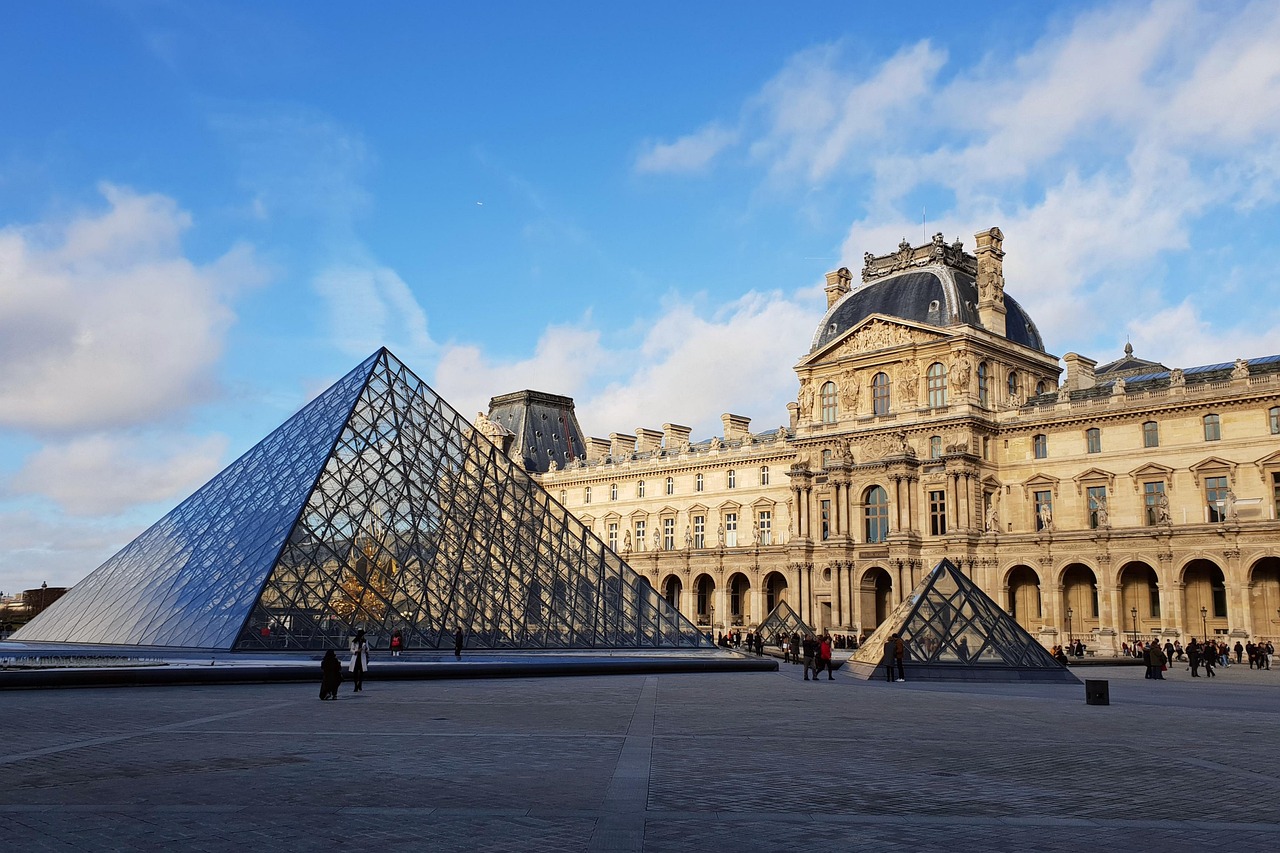
With an astounding 9.6 million visitors in 2019 alone, the Louvre stands as the world’s most visited museum. Nestled in the heart of Paris, this iconic institution houses nearly 38,000 masterpieces and artifacts that span from ancient prehistory to the modern era. Among its treasures are the enigmatic Mona Lisa, the timeless Venus de Milo, and the striking glass pyramid designed by IM Pei, which gracefully rises in the museum’s courtyard. It’s no wonder the Louvre remains one of Paris’s most bustling attractions.
17. French gastronomy was awarded UNESCO World Heritage Status in 2010.
Renowned for its exceptional cuisine, France’s culinary tradition earned a place on UNESCO’s Intangible Cultural Heritage list in 2010. Experts have lauded French gastronomy as more than just a feast for the senses; it is a social ritual that marks life’s most significant moments. This rich culinary heritage fosters connection, bringing friends and families together while reinforcing the bonds that tie communities.
18. France produced the most expensive bottle of wine in the world.
France is not only celebrated for its culinary mastery but also for crafting some of the finest—and most costly—wines in the world. In fact, a 73-year-old bottle of French Burgundy shattered records, becoming the most expensive wine ever sold at auction, commanding a staggering US$558,000. This exceptional bottle of 1945 Romanee-Conti was purchased by a private collector from Asia at Sotheby’s, fetching over 17 times its original estimate of US$32,000. Now that’s a hefty price tag!
19. You might get a fish stuck on your back on April Fool’s Day.
Here’s a quirky little tidbit about France: if you find yourself there on April 1st, don’t be taken aback if a mischievous child sneaks up to attach a paper fish to your back, calling you a “Poisson d’Avril” (April Fish). This playful tradition dates back to the 16th century when King Charles XIV of France altered the calendar. Those who stubbornly stuck to the old March end-of-year celebrations were dubbed fools, and the custom of playfully tricking them was born.
20. The French eat around 30,000 tons of snails a year.
Here’s a curious and somewhat slimy fact about France: each year, the French consume an astonishing 30,000 metric tons of escargot. Interestingly, about two-thirds of these snails hail from the distant regions of Eastern Europe and the Balkans, meaning that if you’ve enjoyed snails in France, they’ve likely traveled quite a journey to reach your plate. This classic French delicacy, often served with a delicious blend of garlic, parsley, and butter, continues to be a beloved feature of the country’s culinary repertoire.
21. Live snails must have a ticket to ride high-speed trains.
Believe it or not, it’s actually against the law in France to transport live snails on a high-speed train without giving them their own ticket! According to French regulations, any domesticated animal weighing less than 5kg must be a paying passenger. In 2008, a Frenchman found himself fined when a ticket inspector discovered him traveling with his snails on board a TGV. Fortunately for him, the state-owned rail company SNCF later decided to waive the fine, but the bizarre rule remains in place!
22. The croissant was actually invented in Austria in the 13th century.
Believe it or not, the iconic French croissant is actually a spin-off of the kipferl, a traditional Viennese pastry that dates back to the 13th century. The tale goes that in 1839, Austrian artillery officer August Zang opened a Viennese bakery in Paris, where he introduced the kipferl to the Parisians. The pastry was an instant hit, so much so that French bakers began crafting their own version, naming it the croissant due to its signature crescent shape. And thus, the croissant was born. As the saying goes, imitation is the sincerest form of flattery!
23. Turning a baguette upside down is seen as unlucky in France.
According to old folklore, placing a baguette or loaf of bread upside down on the table is said to invite misfortune, or even worse—death—upon those nearby. This curious superstition is believed to have its origins in medieval times, when executioners had the dubious privilege of taking goods from shops without paying. To appease them, bakers would leave loaves turned upside down. If anyone dared touch the bread or placed it upside down themselves, they were required to mark it with a cross before consuming it, as a safeguard against bad luck. Yikes!
24. France produces around 1.7 million tons of cheese a year in around 1,600 varieties.
To say the French have a passion for cheese would hardly do justice to their love affair with it. In 2018, this dairy-obsessed nation churned out a staggering 1.7 million tons of cow’s milk cheese. With around 1,600 distinct varieties, divided into eight delectable categories, there’s no shortage of options to explore. Fortunately, the French don’t keep all this cheese to themselves. That same year, they exported over 679,000 tons, while nearly 895,000 tons graced the shelves of French retailers in 2017. The world is, quite happily, invited to share in their cheesy bounty. Merci beaucoup!
25. French law forbids couples from kissing on train platforms.
Here’s a law that might raise a few eyebrows. In France, it’s actually illegal to kiss on the platform while a train is waiting to depart. This peculiar decree, dating back to 1910, was put in place at the request of railway officials who sought to curb the delays caused by overly affectionate farewells. So, if you’re planning a passionate embrace, make sure it happens before the train pulls into view—otherwise, you might just be breaking the law! There goes that dramatic Hollywood movie kiss!
26. Paris Gare du Nord is Europe’s busiest railway station.
Every year, more than 214 million passengers pass through this bustling hub. Originally constructed in 1846, the station quickly outgrew its capacity, leading to its demolition and reconstruction in 1889. Over the years, it has seen multiple expansions, particularly between the 1930s and 1960s. Now, in preparation for the 2024 Summer Olympic Games in Paris, the station is set to undergo yet another round of expansion, aimed at accommodating an additional 200,000 daily commuters. Better avoid rush hour!
27. The French rail network is the second largest in Europe ninth biggest in the world.

Stretching over 29,000 kilometers, the French railway network ranks as the second largest in Europe and the ninth largest globally. France was a pioneer in adopting high-speed rail technology, with the state-run Société Nationale des Chemins de fer Français (SNCF) launching the TGV (Train à Grande Vitesse) in 1981. Today, the high-speed network spans more than 1,550 kilometers, while the standard long-distance services, known as Intercités, complement the TGV. With the upcoming Tours-Bordeaux high-speed rail project, an additional 302 kilometers will be added, further expanding this impressive network.
28. The world’s greatest cycle race, the Tour de France, is more than 100 years old.
On July 1, 1903, 60 cyclists set off on the inaugural Tour de France from the Parisian suburb of Montgeron, unaware they were embarking on a journey that would become the world’s most iconic cycling event. Over a century later, the race has evolved into an extraordinary spectacle, with 198 riders covering a staggering 3,200 kilometers across France in 23 stages. The 2013 edition, marking the 100th anniversary of the Tour, drew a remarkable 15 million spectators to witness the historic 21-stage race, a testament to its enduring legacy.
29. The tradition of wearing a white dress originated in France in 1499.
For most brides, the dream of gliding down the aisle in a stunning white gown is a cherished tradition. Yet, before the 1900s, brides rarely splurged on a special dress and instead donned their finest outfit. The iconic white wedding gown actually traces its origins to France, where Anne of Brittany wore one for her marriage to Louis XII in 1499, sparking the tradition. However, it wasn’t until 1840, when Queen Victoria married Prince Albert, that the white dress truly captured the public imagination and became the enduring custom we know today.
30. At least 35% of all music played on private radio stations must be French.
If French music isn’t your cup of tea, you may want to stick to your own playlist rather than turning on the local radio. After all, over a third of the songs you’ll hear will be in French. This was part of a cultural protection effort initiated by the French government in 1994 to shield the country from what they saw as an overwhelming Anglo-Saxon influence. However, in 2016, following a 24-hour protest by rebellious radio stations, French lawmakers agreed to reduce the quota to 35%. Stations focusing on foreign music also face a more modest 15% quota.
Conclusion
France is much more than a beautiful destination; it’s a country rich in history, culture, and charm that continues to captivate the world. From its iconic landmarks and world-class cuisine to its influence on art, fashion, and philosophy, France offers endless opportunities for discovery. Whether you’ve visited or are dreaming of your next trip, the facts about France reveal a nation that has shaped global history and continues to inspire. So, next time you think of France, remember—it’s not just about the sights, but the stories and experiences that make it truly unforgettable. Bon voyage!
After you have decided to pay a visit to France or go to France for further education, accommodation is the first and foremost thing. uhomes.com is a platform providing affordable, reliable and comfortable student accommodation in France.
FAQ
Because of its shape, France is also known as the Hexagone, and the French often use this nickname when talking about their country. In fact, the shape of France can be drawn in a six-sided shape, with which children learn to draw their own country from an early age at school.
The total area of France is 211,209 square miles, making France slightly smaller than two Colorados.
France is renowned for its rich history, culture, cuisine, and iconic landmarks like the Eiffel Tower and Louvre Museum. It’s also famous for its diverse landscapes, from the French Riviera to the Alps, and for its world-famous cuisine, including cheese, wine, and pastries.
In 843 a treaty created the territory of West Francia, which would later become France. Over the next thousand years, West Francia was ruled by a series of powerful kings. Several wars were fought over who would rule France, including the Hundred Years War, from 1337 to 1453.
France is in Europe.







